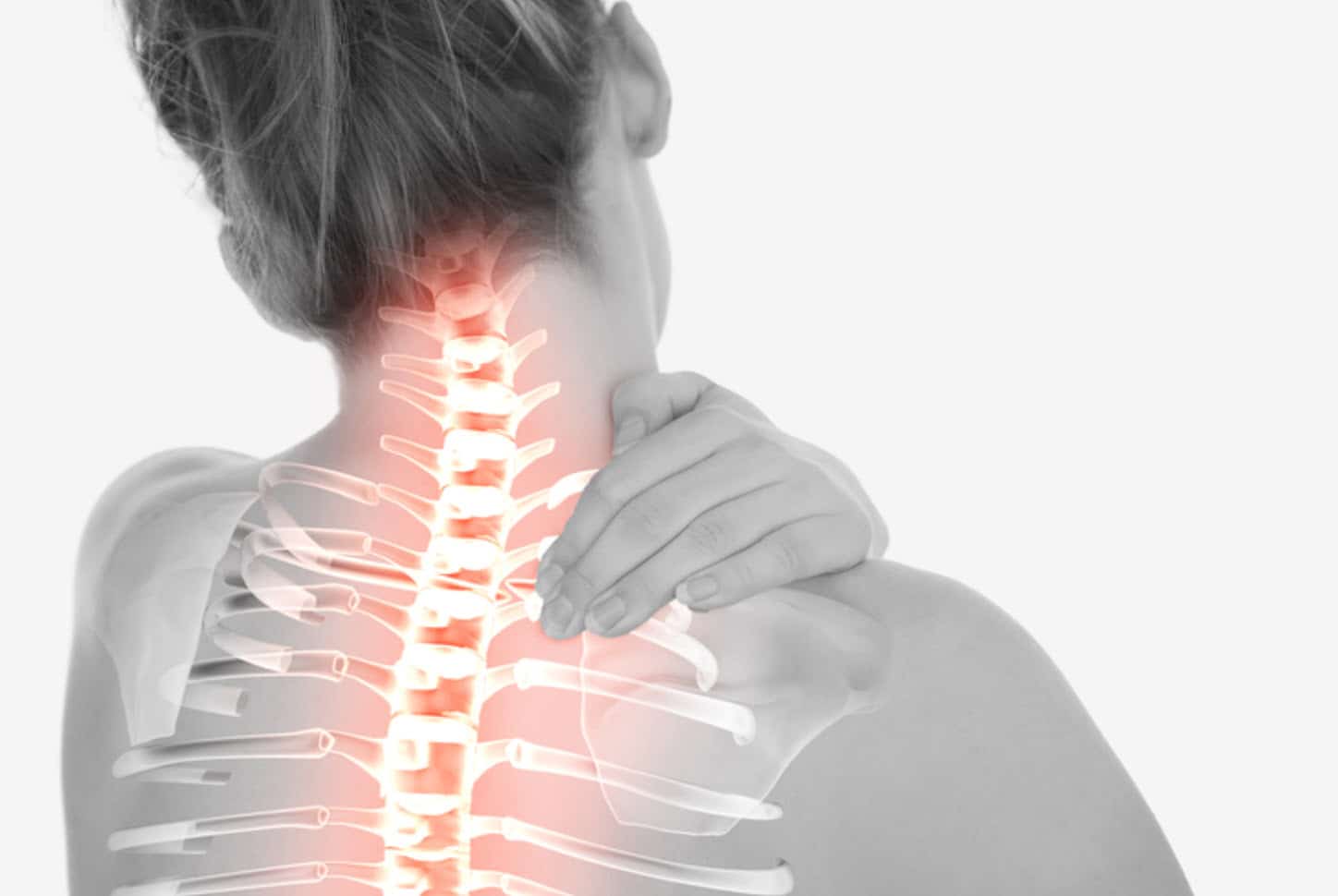Neck muscles, such as the Sternocleidomastoid and Trapezius, are vital for rotation, lateral neck flexion, posture, head positioning, and neck health. To ensure optimal performance and maintenance, we must not overlook them. Neglecting these muscles can lead to risks which we’ll explore in the context of neck muscle anatomy and function.
Understanding the Neck Anatomy
The neck’s anatomy, comprising of muscles, nerves, bones, and other structures, is complex. Key components include neck ligaments and the Hyoid Bone. Neck ligaments stabilize and support the cervical vertebrae, hence maintaining neck structure and flexibility while also acting as shock absorbers for the cervical spine. The Hyoid Bone, not directly connected to any other bone, is anchored by muscles. It facilitates tongue movement and swallowing. It is crucial for tongue muscle foundation, vocalization, and larynx protection. Understanding these components advances comprehension of neck functionality and movement.
Primary Neck Muscles Explained
The Sternocleidomastoid and Trapezius are neck’s key muscles, crucial for movement and support. Originating from sternum and clavicle, the Sternocleidomastoid enables neck rotation and flexion, attaching at the mastoid process of the temporal bone. The Trapezius, a large superficial muscle extending over the neck’s back and upper spine, is vital for moving, rotating, and stabilizing the scapula.
Understanding Sternocleidomastoid Muscle
The sternocleidomastoid muscle, positioned on both sides of the neck, is critical for head and neck motion. Its unique structure enables diverse biomechanical functions like rotation, flexion, and cervical spine lateral bending. Anomalies such as congenital muscular torticollis manifest as a shortened, fibrotic sternocleidomastoid muscle, resulting in neck tilt and reduced motion range. Evaluation of these conditions involves sternocleidomastoid palpation techniques to detect muscle tension, tenderness, and possible structural abnormalities. This meticulous investigation aids in diagnosing and managing diseases impacting this vital neck muscle.
Role of Trapezius Muscle
The trapezius muscle, a major neck muscle, facilitates neck and shoulder movements. This large, surface-level muscle spans the back of the neck and upper spine, enabling actions like shrugging, neck rotation, and lateral neck flexion. Regular trapezius exercises enhance muscle strength, posture, and mitigate trapezius pain often from poor posture or overuse. Targeted exercises, including dumbbell shrugs and cable face pulls, boost trapezius function and resilience. Persistent or severe trapezius pain may indicate serious conditions, requiring professional medical evaluation and treatment.
The Role of Cervical Muscles
The cervical muscles, key to neck stability and mobility, are influenced by the positioning of the cervical vertebrae. These muscles are connected to the nervous system via the cervical plexus, allowing the brain to control muscle activity and receive sensory information from the neck. Thus, cervical muscles are crucial not only for mechanical support but also for sensory feedback and motor control, highlighting the importance of their health for overall neck function.
Function of Sternocleidomastoid Muscle
The sternocleidomastoid muscle, a prominent neck muscle, enables head rotation and flexion. Originating from the sternum and clavicle, it extends to the mastoid process of the temporal bone. Unilateral action allows head rotation to the opposite side and chest flexion, while bilateral action facilitates neck flexion and head extension.
Injuries to the sternocleidomastoid can limit neck mobility and lead to torticollis, a condition characterized by a tilted head. Additionally, this muscle’s dysfunction can contribute to sleep apnea due to its essential role in maintaining an open airway during sleep. Thus, the sternocleidomastoid’s health is vital for both head and neck movement and sleep quality.
The Longus Capitis and Colli
In the prevertebral group of neck muscles, the Longus Capitis and Colli are pivotal for neck stability and movement. Positioned on the vertebral column’s anterior surface, both muscles assist in neck flexion, lateral flexion, and rotation.
The Longus Capitis, or Rectus Capitis Anterior, spans from the skull base to the third to sixth cervical vertebrae. Disorders like spasms or nerve impingements can cause symptoms such as neck stiffness, pain, and dizziness due to its function in head positioning.
The Longus Colli extends from the third thoracic vertebra to the fourth cervical vertebra, stabilizing and controlling the cervical spine’s movements. Strains or degenerative changes can result in neck pain, reduced mobility, and postural abnormalities.
Knowledge of these muscles’ anatomy, roles, and pathological conditions aids in clinical decisions for treating neck-related symptoms.
Importance of Scalenus Muscles
The scalenus muscles, including anterior, medius, and posterior, are crucial for neck functionality, facilitating flexion, lateral flexion, and rotation. These muscles’ relevance is highlighted by scalenus syndrome, also termed thoracic outlet syndrome, causing symptoms like pain and numbness. Strengthening these muscles is vital for optimal neck health, improved physical functionality, and better posture.
Scalenus Muscles Function
The scalenus muscles, located in the lateral neck, play key roles in lateral flexion, neck rotation, and respiration. Comprising anterior, medius, and posterior scalene, they elevate the first and second ribs during inspiration, thereby expanding the thoracic cavity – a vital aspect of breathing mechanics. They also maintain cervical spine balance. Dysfunction can result in scalenus syndrome, causing neurovascular symptoms in upper limbs. Thus, scalene muscles’ effective operation is crucial for respiration and neck mobility.
Common Scalenus Ailments
Scalene syndrome and anterior scalene issues are common disorders affecting scalenus muscles, essential for respiration and neck mobility. Scalene syndrome, a neurovascular condition, results from brachial plexus or subclavian artery compression. It manifests in pain, numbness, or tingling in the neck, shoulder, arm, or hand. Anterior scalene problems, including spasms or strains, limit mobility and cause discomfort. Management strategies for scalene syndrome comprise physical therapy, medication, and, in severe instances, surgery. Early detection, accurate diagnosis, and effective treatment preserve the vital functions of these muscles.
Strengthening Scalenus Muscles
Strengthening scalenus muscles is vital due to their primary roles in respiration and neck mobility which directly impact overall health and comfort.
- Mobility: Scalenus strength supports neck movements such as rotations and lateral flexions, enhancing mobility.
- Posture: Robust scalenus muscles contribute to proper neck posture, minimizing neck-related health risks.
- Breathing: These muscles facilitate deep breathing by lifting the first two ribs during inhalation.
Regular scalenus stretching exercises are recommended for muscle strength improvement, with consistent practice being crucial for optimal outcomes.
Deeper Layer Neck Muscles
The deeper layer of neck muscles, located beneath the superficial layer, includes both the anterior and posterior vertebral muscles. These muscles, critical for movements such as neck flexion, extension, and rotation, also play a significant role in maintaining postural stability.
The anterior vertebral muscles, comprising the longus colli and longus capitis, facilitate flexion and rotation of the cervical spine. These muscles, attaching directly to the cervical vertebrae, offer substantial leverage for neck movements and play a key role in neck health through their strength and endurance.
The posterior vertebral muscles, including the semispinalis cervicis, multifidus, and rotatores cervicis, are essential for neck extension and rotation. These muscles, attaching to the vertebrae’s posterior aspect, work together in the cervical region to stabilize the spine, thus helping prevent neck strain and injury.
Despite being less noticeable than the superficial neck muscles, the deeper layer muscles are critical for neck function and movement. Understanding their structures and functions contributes to creating effective strategies for neck muscle conditioning and rehabilitation, essential for maintaining neck health.
Common Neck Muscle Injuries
Common neck muscle injuries, such as sprains, strains, and whiplash-associated disorders, affect many individuals. These conditions often stem from sudden impacts, repetitive strains, or poor posture, causing overstretching or tearing of the neck muscles and ligaments.
- Whiplash-associated disorders typically result from sudden neck hyperextension and flexion, common in car accidents. Management includes pain relief, physiotherapy, and, in severe cases, surgery.
- Neck ligament sprains happen when ligaments stretch or tear due to sports injuries, falls, or sudden twists, leading to pain, swelling, and neck movement difficulty.
- Muscle strains in the neck usually result from prolonged poor posture or overuse, causing pain, stiffness, and limited motion range.
Though managing these conditions can be challenging due to the neck’s musculoskeletal complexity, prompt diagnosis and appropriate treatments can offer relief and functional improvement. Prevention strategies also play a crucial role in avoiding these injuries.

Prevention of Neck Strains
Understanding ergonomics, maintaining an exercise routine, and mindfulness of posture can prevent neck strains. Proper body alignment during work and rest, enabled by ergonomics, minimizes neck strain risk. Early strain symptoms, such as mild discomfort or stiffness, should not be ignored to avoid chronic conditions. Regular exercise promotes neck flexibility and strength, reducing strain risk. Mindfulness of postural habits, especially during extended sitting or standing, avoids unnecessary neck muscle stress.
Exercises for Neck Strengthening
To prevent neck strains, strengthening neck muscles is crucial. Such exercises enhance muscle resilience and improve motion range, mitigating injury risk.
- Neck Yoga: Yoga practice benefits neck health significantly, by improving flexibility, enhancing muscular strength, and promoting better alignment. Poses such as the ‘Cobra’ and ‘Cat-Cow’ are particularly beneficial.
- Isometric Neck Exercises: These exercises strengthen neck muscles using resistance from your own hand while attempting to turn, tilt, or nod your head, without neck movement.
- Chiropractic Exercises: Under a chiropractor’s guidance, specific neck muscle-targeting exercises can reduce recurrent neck pain risks, improve posture, and strengthen neck stability.
Impact of Posture on Neck Muscles
Correct posture is critical for neck muscle health, preventing strain, tension headaches, and degenerative conditions. Clinically, an upright neck in a neutral position ensures optimal health. Devices like cervical collars and head braces aid in proper neck alignment, reducing muscle strain and decreasing the risk of tension headaches and degenerative conditions. Ergonomic workspaces contribute significantly to maintaining correct neck posture. An ergonomic setup, with eye-level computer screens, spine-supporting chairs, and properly positioned keyboards, minimizes the risk of neck muscle strain.
Neck Muscles: Maintenance and Care
Regular exercises, stretching, and maintaining alertness for signs of discomfort are key to neck muscle health and longevity. The goal is to ensure neck muscle flexibility and strength as they support the head and enable movement.
- Exercise and Stretch: Daily neck-focused exercises and stretches enhance muscle strength and motion range. A certified physiotherapist should guide these exercises to prevent injury.
- Massage Benefits: Regular neck massages relieve tension, lessen stiffness, and encourage relaxation. Studies suggest massages improve blood flow and lymphatic drainage, speeding up muscle healing.
- Hydration: Sufficient hydration supports all body functions, including muscle health. Water maintains muscle temperature, lubricates joints, and assists in nutrient transport for muscle repair and growth.
Frequently Asked Questions
What Causes Neck Muscle Spasms and How Can They Be Treated?
Stress, poor posture, and muscle overuse cause neck spasms. Treatment includes stress management, regular exercise, optimal hydration, and an ergonomic workspace.
Can Neck Muscles Affect Headaches or Migraines?
Indeed, neck muscle tension contributes to headaches and migraines. Poor posture affects these muscles, causing discomfort. Techniques for relaxing neck muscles may decrease migraine frequency or severity.
How Does Aging Impact the Strength and Flexibility of Neck Muscles?
Aging impacts neck muscles by reducing strength and flexibility due to physiological alterations. Employing posture adjustments and regular aging exercises can mitigate these effects, enhancing endurance and flexibility in the neck region.
Can a Neck Muscle Injury Cause Dizziness or Vertigo?
Indeed, cervicogenic dizziness, a condition potentially resulting from a neck muscle injury, can lead to vertigo. Effective injury rehabilitation and vertigo prevention strategies ensure optimal recovery.
Are There Any Specific Dietary Requirements for Maintaining Healthy Neck Muscles?
A balanced diet, rich in essential nutrients such as protein, vitamins, and minerals, promotes overall muscle health, including that of the neck. Regular muscle-strengthening exercises further boost strength and flexibility, fostering optimal neck muscle posture.


